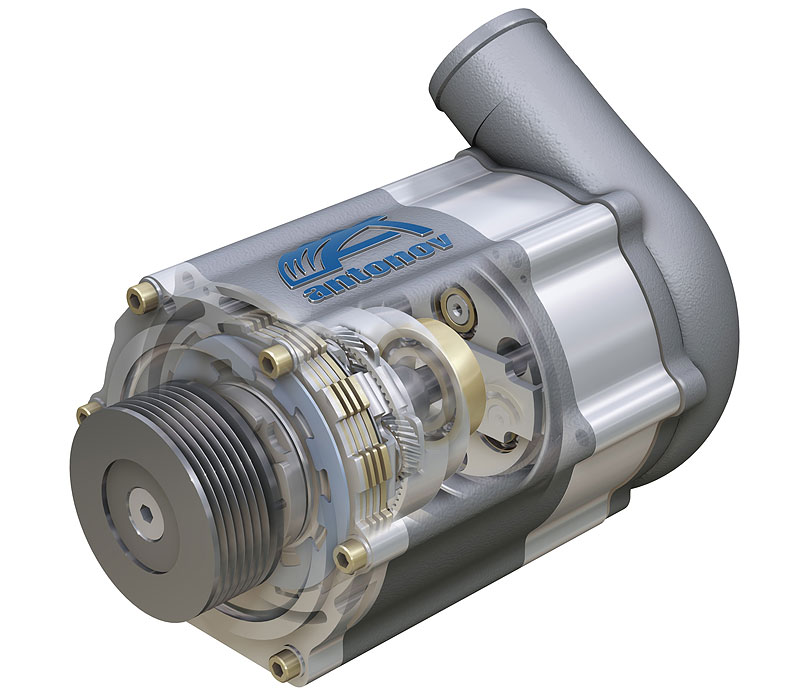

http://image.importtuner.com http://images.paultan.org
Though the end result of both aftermarket parts is identical (compress air to allow more into the intake to create more power) they differ in how they do this. The Turbo is gas driven, from exhaust from the engine, so none of the mechanical energy of the engine is transferred into it. A supercharger is mechanically driven by the engine itself. a portion of the engines kinetic energy is transferred to the belt drive on the supercharger which then rotates the compression wheel. Because the compression wheel on the supercharger needs to spin far more rapidly than the belt turning the pully can, there is a different gearing system. The compression wheel is not directly attached to the previous wheel like in the turbocharger. The driving gear does not need to spin too fast because the angular velocity will be directly projected onto the compression wheel, and since it is smaller in radius it will have an increased angular velocity and will spin very rapidly (optimally between 50,000 and 70,000 rpm's). At this rate, the supercharger can produce up to an additional nine pounds of pressure according to the How Stuff Works article on superchargers, which also has a fully animated diagram showing the full process (http://auto.howstuffworks.com). Now again, both of them do the same thing, force more air into the system. This increases not only engine performance, but also efficiency. Turbos and superchargers will get the air to fuel ration closer to, if not right at, the most optimum (14:1). Not only will this boost the engines power (generally by around 50%) but it will also burn more efficiently. With optimum combustion conditions, the engine gets more out of each rotation. By getting more energy out, it has to put less in to do the same amount of work. The less the engine has to work, the less energy it uses. The less energy it uses, the less fuel it burns. Turbos, however, have the advantage of also recycling what would normally be engine waste so that it becomes a productive force in the engine rather than simply getting rid of some of the engines energy in heat. Superchargers do not do that, they still sacrifice small amounts of energy.